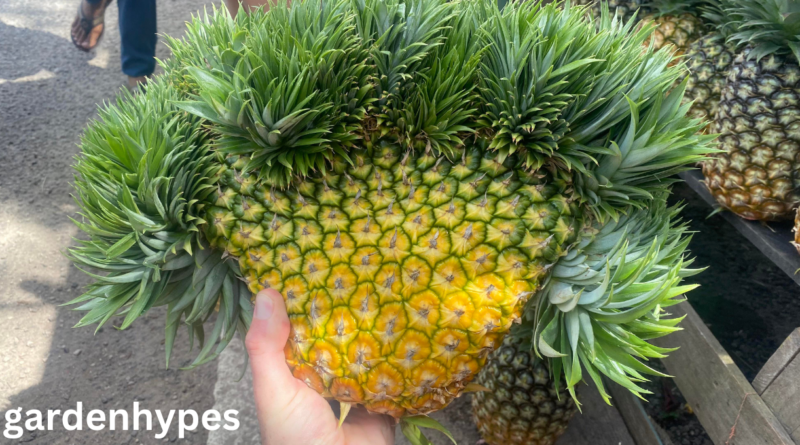Fruits That Look Like Pineapple Surprising Twins
Pineapples are one of the most recognizable fruits in the world. With their golden-yellow flesh, spiky green crown, and unique diamond-patterned skin, they stand out in any fruit basket. But what if I told you that pineapples aren’t the only fruits with this exotic, spiky charm? Believe it or not, there are several fruits across the globe that look surprisingly similar to pineapples. From large tropical giants to lesser-known rare fruits, many of them share the same spiky or segmented appearance that makes the Fruits That Look Like Pineapple so iconic.
In this article, we’ll explore all the fruits that resemble pineapples, from close twins like pandanus fruit to distant cousins like jackfruit and durian. We’ll also uncover the differences, benefits, and cultural significance of these lookalike fruits. By the end, you’ll know exactly how to identify pineapple from its “doppelgängers.”
click in link Pear Varieties
Introduction to Pineapple and Its Unique Appearance
Why the Pineapple is Called the “Tropical King”
The pineapple isn’t just another fruit; it’s a symbol of tropical abundance and hospitality. Originating from South America, particularly Brazil and Paraguay, the pineapple quickly became a global sensation after explorers introduced it to Europe and beyond. With its royal crown of spiky leaves and golden skin, it earned the nickname “Tropical King.”
For centuries, pineapples were considered a luxury fruit. In the 17th and 18th centuries, Europeans would display pineapples at banquets as a sign of wealth and prestige. Growing pineapples outside the tropics was expensive and challenging, making them a prized possession. Even today, when pineapples are more accessible, they still carry a sense of exotic luxury.
Another reason pineapples are called the “king” is because of their versatility. They’re not only delicious but also packed with nutrients like vitamin C, bromelain, and antioxidants. From tropical drinks to savory dishes, pineapple has earned a place in kitchens worldwide.
The Distinctive Features of a Pineapple
What makes pineapples so easy to recognize is their unusual combination of features. First, the rough, diamond-patterned skin covered in small spiky protrusions. Second, the leafy crown that gives it a regal look. Third, its cylindrical or oval shape, usually medium-sized compared to other tropical fruits.
When cut open, pineapples reveal juicy, yellow-golden flesh that’s both sweet and tart. The core is tougher but edible, while the outer skin is not consumed. This distinct structure makes it stand apart from many other fruits—yet, surprisingly, some fruits in nature come close to mimicking this unique look.
Fruits That Share Pineapple’s Looks
Pandanus Fruit – The Closest Lookalike
If there’s one fruit that people often confuse with pineapple, it’s the pandanus fruit. Also known as “hala fruit,” this tropical gem grows in Southeast Asia, the Pacific Islands, and parts of Australia. At first glance, it looks like a cluster of pineapple segments. Its surface is covered in hard, spiky wedges that resemble pineapple skin.
Unlike pineapple, however, pandanus fruit is not juicy inside. Instead, it contains fibrous sections that can be chewed to extract a sweet juice. The taste is far less flavorful than pineapple, but the resemblance in appearance is striking.
In many cultures, pandanus fruit plays an important role. Its leaves are widely used in cooking, weaving mats, and even making traditional medicines. The fruit itself may not be as globally popular as pineapple, but it certainly gives it competition in looks.
click in link Pear Varieties
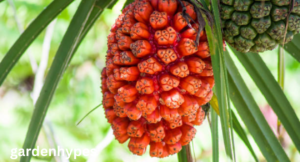
Jackfruit – A Giant That Resembles Pineapple
Jackfruit is the world’s largest tree-borne fruit, and although it can weigh up to 100 pounds, its spiky green exterior gives off pineapple vibes. The outer skin is bumpy and textured, similar to a pineapple’s rugged surface.
Inside, jackfruit couldn’t be more different. Instead of juicy yellow flesh, it has large, starchy pods that can be eaten raw when ripe or cooked when unripe. In fact, jackfruit is often called a “meat substitute” because its fibrous texture makes it perfect for vegan pulled pork and curries.
Despite the differences in taste and size, the jackfruit’s skin often tricks people into thinking it’s related to pineapple. Both fruits thrive in tropical climates and hold cultural importance in Asia and beyond.
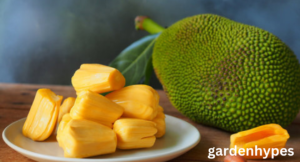
Soursop (Graviola) – A Spiky Cousin
Soursop, also known as graviola, is another fruit that often gets mistaken for pineapple due to its spiky skin. Native to the tropical regions of the Americas, soursop is green, oval, and covered in soft, curved spines.
When you cut it open, though, the difference is clear. Soursop has white, creamy pulp with black seeds, offering a sweet-tart flavor often compared to a mix of strawberry and pineapple. This unique taste makes it popular for juices, ice creams, and desserts.
Soursop has also gained attention in recent years for its potential health benefits, including immune-boosting properties. Still, when it comes to appearance, many people immediately think of pineapple at first glance.
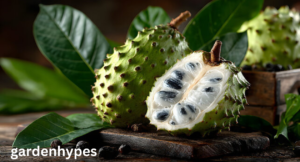
Durian – The Spiky Monarch Often Mistaken for Pineapple
Durian, often called the “king of fruits” in Southeast Asia, is another fruit that shares some visual similarities with pineapple. Its spiky shell looks somewhat like a pineapple’s rugged skin, though durian spikes are sharper and more intimidating.
Inside, however, durian is entirely different. Known for its strong smell—sometimes described as rotten onions or sulfur—durian divides opinions. Some adore its creamy, custard-like flesh, while others can’t stand its pungent aroma.
Because of its spiky exterior and oval shape, tourists often confuse durian with pineapple before cutting it open. But make no mistake—once you smell it, you’ll never confuse the two again!
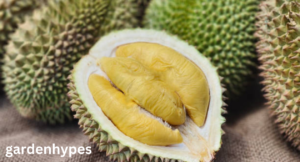
Screw Pine Fruit – A Lesser-Known Resemblance
The screw pine fruit, which grows in tropical regions, is another lesser-known lookalike. Its segmented, spiky surface looks very similar to pineapple. In fact, at certain growth stages, screw pine fruit clusters appear almost identical to small pineapples.
click in link Pear Varieties
The fruit is not as commonly eaten as pineapple, but it’s important in local cuisines and traditional medicine. The resemblance lies mostly in the structure of its skin, which mimics pineapple’s distinctive texture.
faqs
- Which fruit looks the most similar to a pineapple?
The pandanus fruit (also called hala fruit) is often considered the closest lookalike. Its segmented, spiky surface strongly resembles the skin of a pineapple, though its inside and taste are quite different. - Is jackfruit the same as pineapple?
No, jackfruit and pineapple are completely different fruits. While both have rough, spiky exteriors, jackfruit is much larger and contains starchy pods inside. Pineapple, on the other hand, is juicy, sweet, and smaller in size. - Why do so many tropical fruits look like pineapples?
Many tropical fruits develop spiky or segmented skin as a natural defense mechanism to protect themselves from animals and pests. This similarity in skin texture makes some fruits, like durian, soursop, and breadfruit, look like pineapple even though they’re not related. - Can you eat all fruits that look like pineapple?
Yes, most of them are edible, though their taste and texture vary widely. Some, like jackfruit and soursop, are sweet and delicious, while others, like screw pine fruit, are more fibrous and less commonly eaten. - How can I easily tell a pineapple apart from its lookalikes?
The easiest way is by checking the crown. Pineapples always have a spiky green crown of leaves at the top. Most of their lookalikes, like jackfruit or durian, don’t have this feature. Additionally, pineapples are smaller compared to giants like jackfruit or durian.
